
LOADING ...
In response to evolving domestic opinion, eMedals Inc has made the conscious decision to remove the presentation of German Third Reich historical artifacts from our online catalogue. For three decades, eMedals Inc has made an effort to preserve history in all its forms. As historians and researchers, we have managed sensitive articles and materials with the greatest of care and respect for their past and present social context. We acknowledge the growing sentiments put forth by the Canadian public and have taken proactive actions to address this opinion.
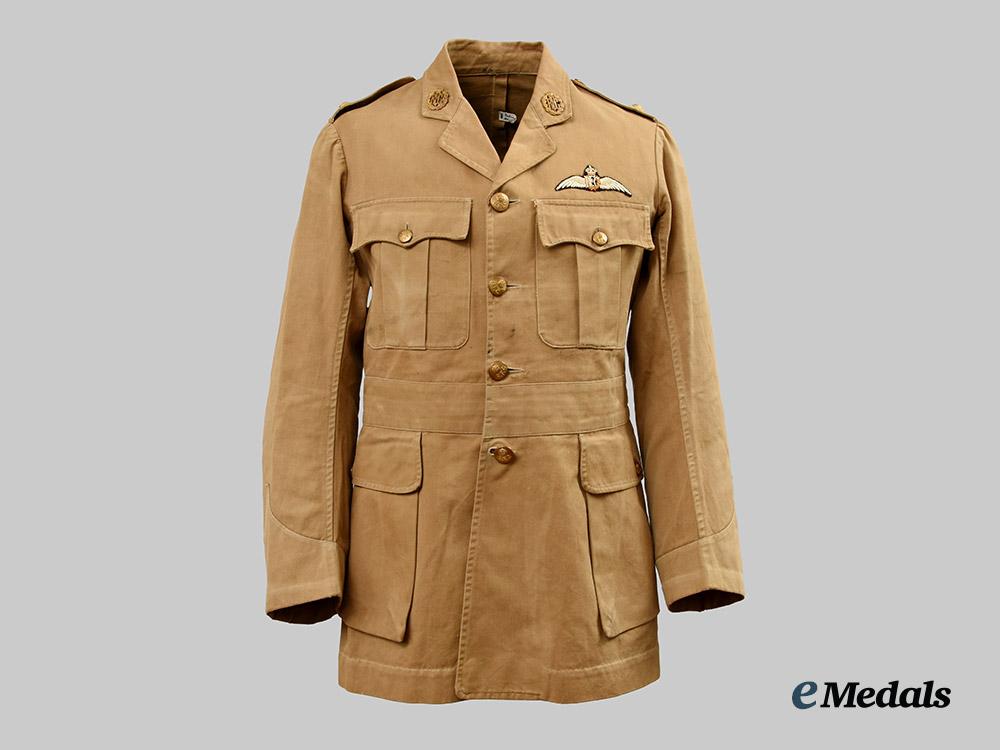
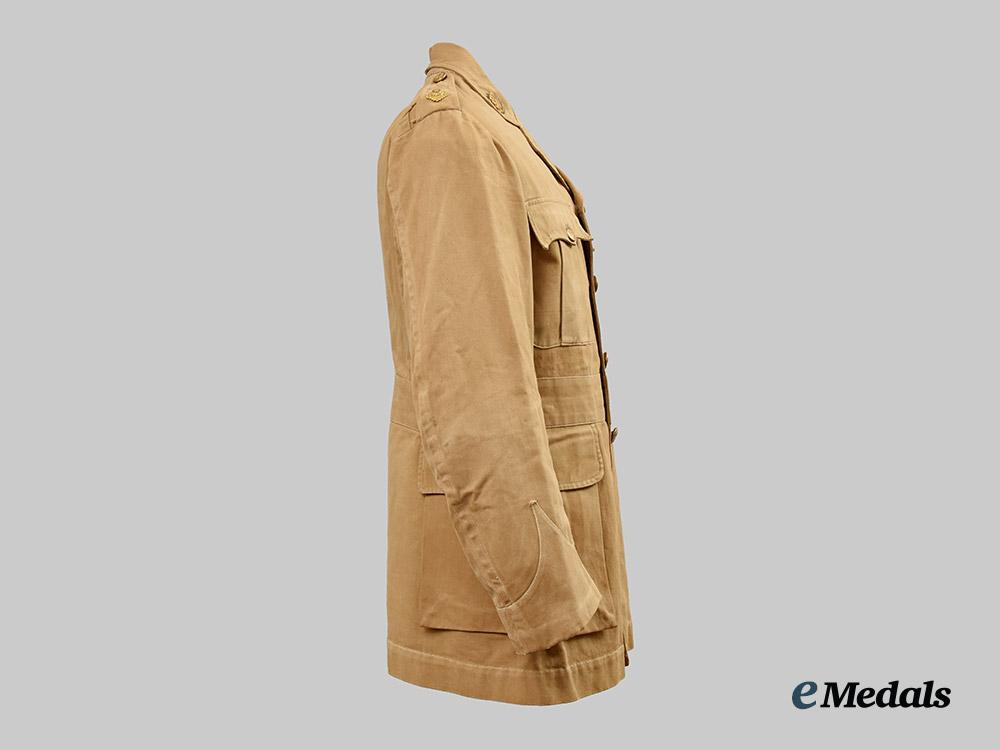
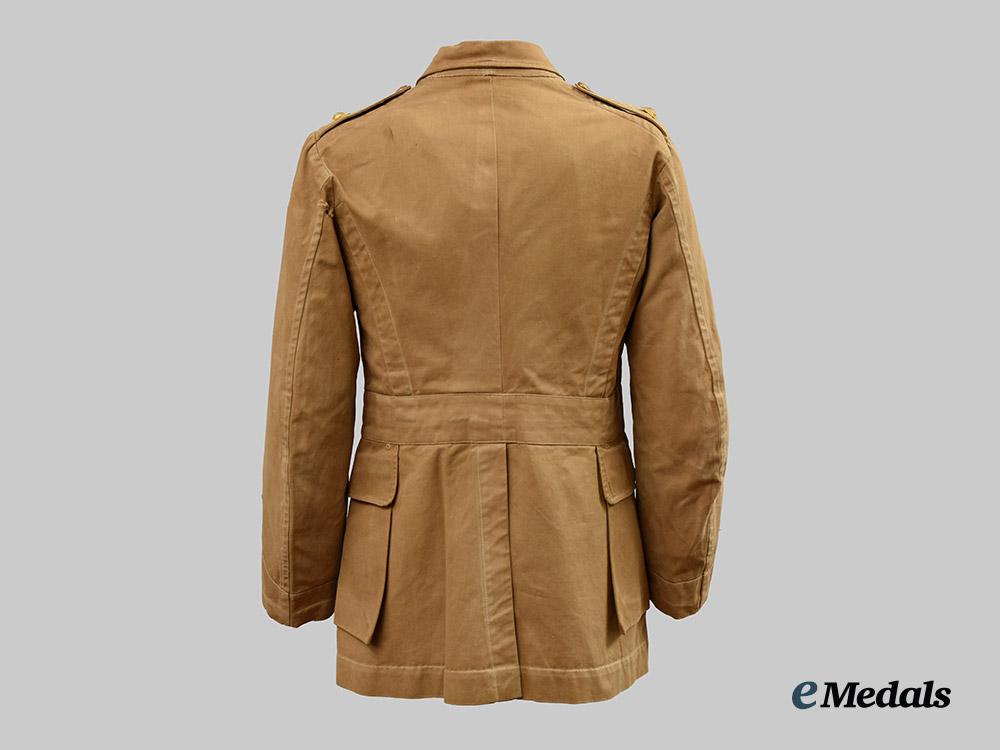
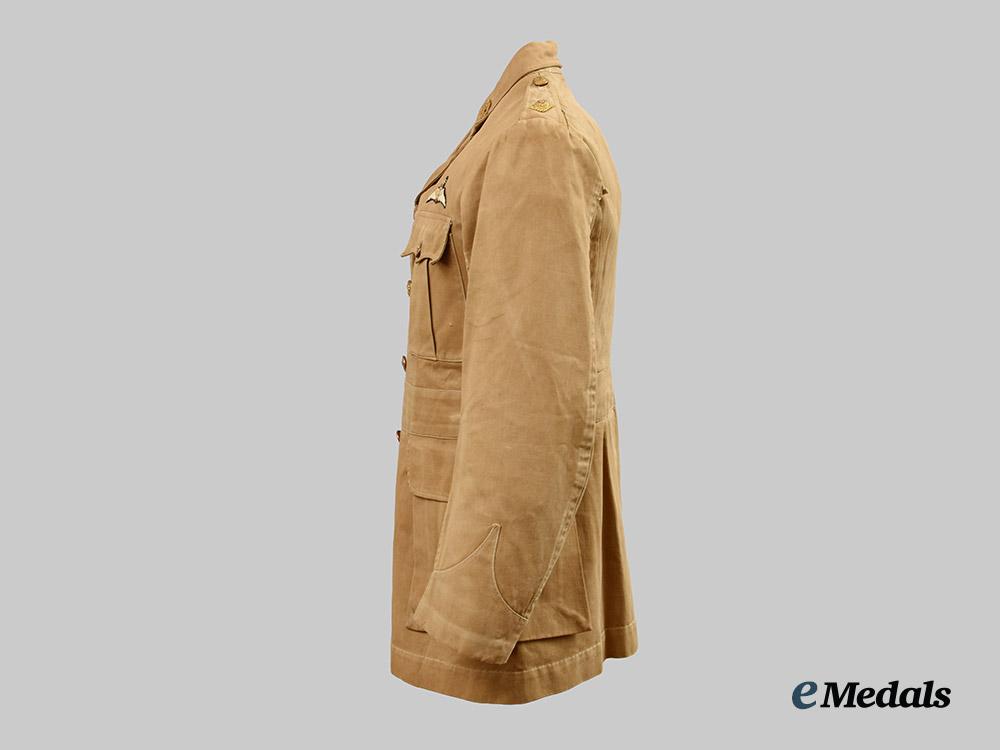
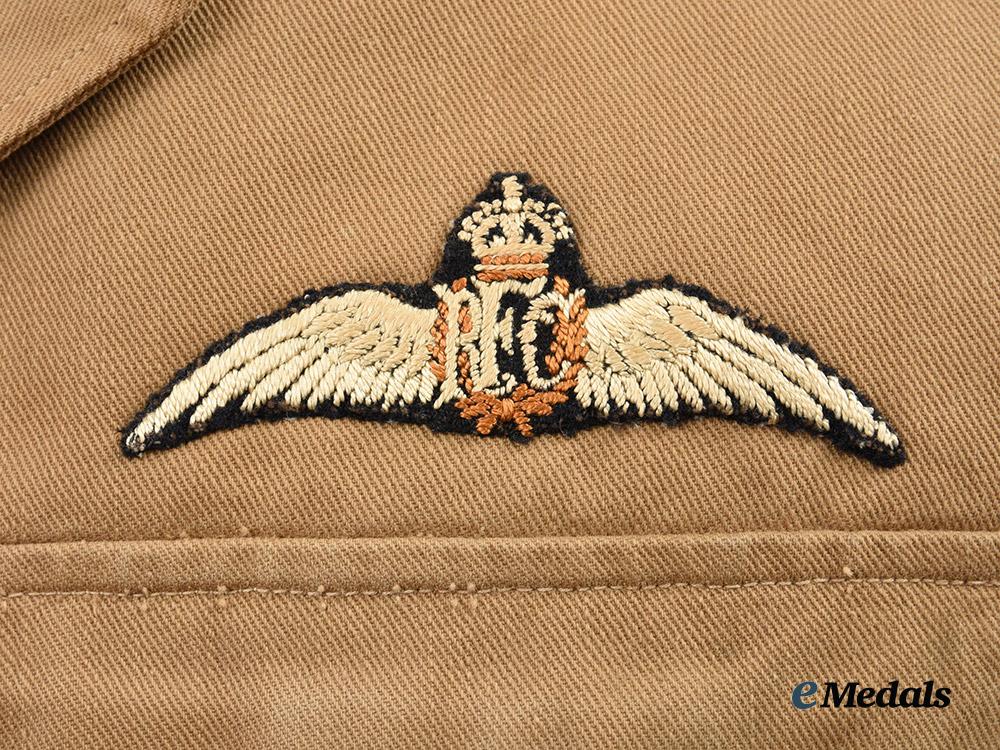
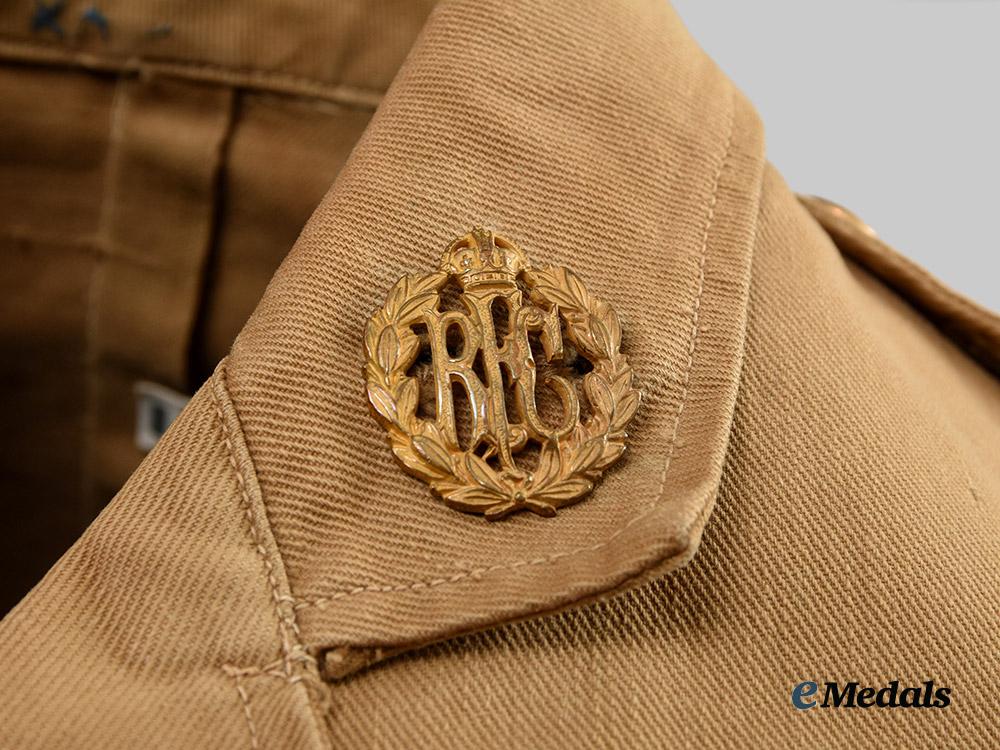
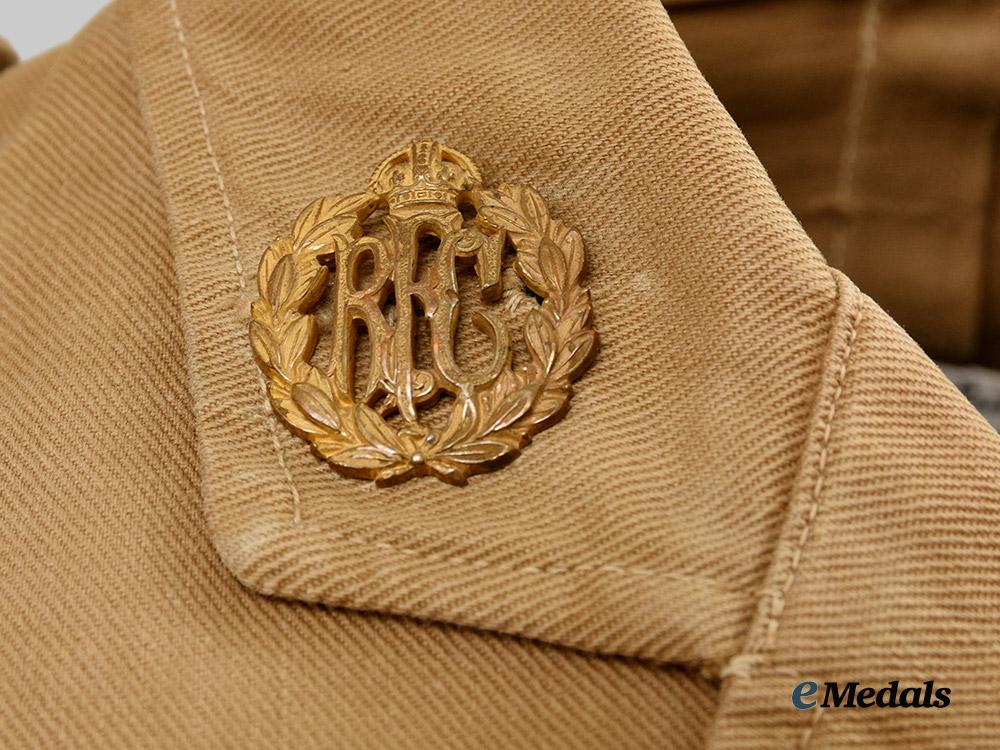
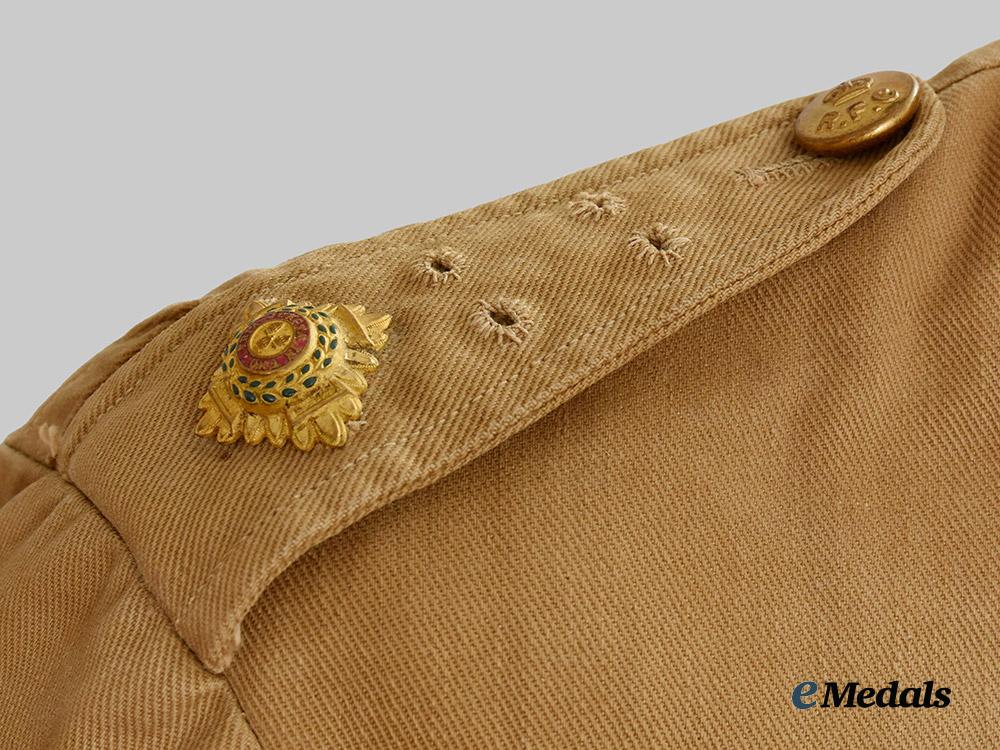
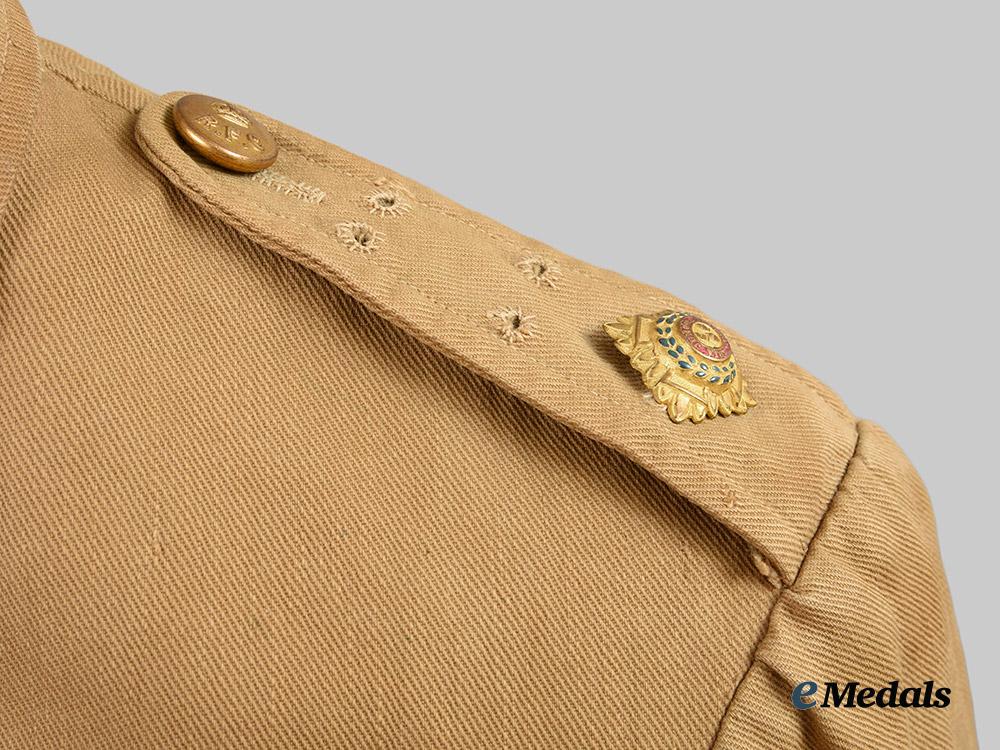
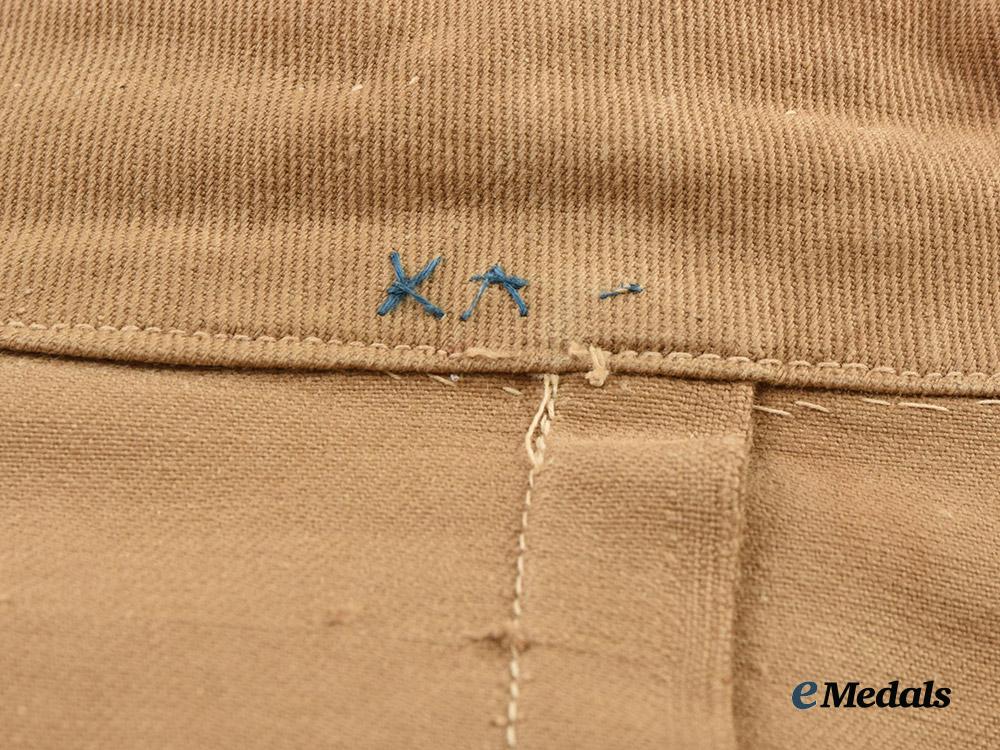
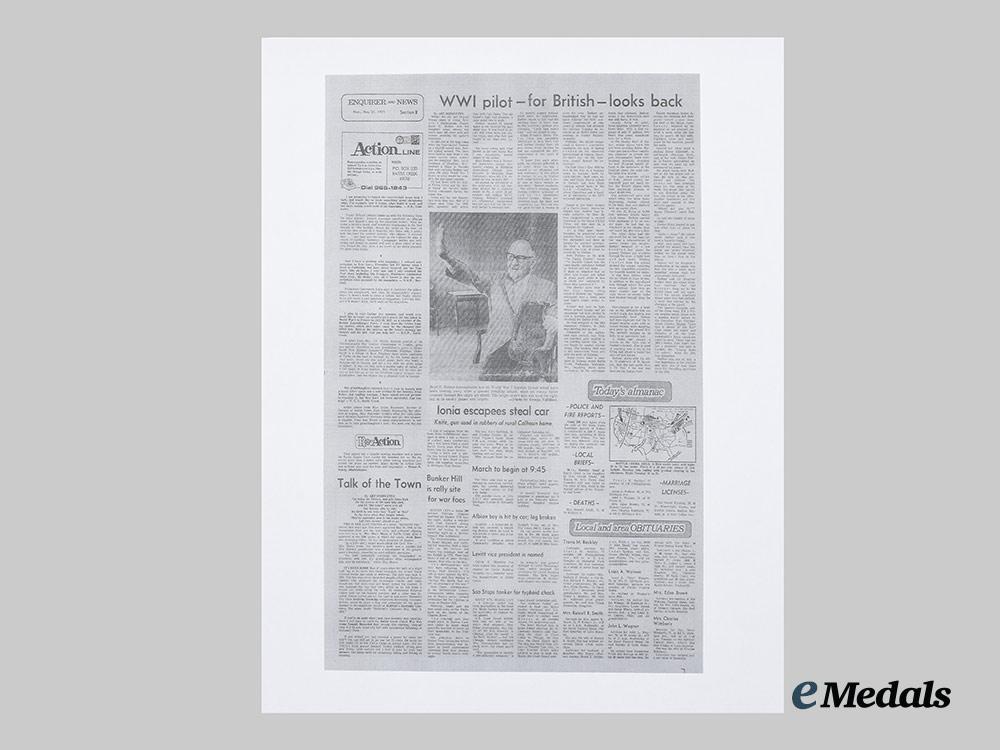
United Kingdom. The Khaki RFC Tunic of Second Lieutenant Boyd Hamilton Redner, RFC 28th Squadron
United Kingdom. The Khaki RFC Tunic of Second Lieutenant Boyd Hamilton Redner, RFC 28th Squadron
SKU: ITEM: GB8136
0% Buyer's Premium
Current Bid:
Your Max Bid:
Bid History:
Time Remaining:
Couldn't load pickup availability
Shipping Details
Shipping Details
eMedals offers rapid domestic and international shipping. Orders received prior to 12:00pm (EST) will be shipped on the same business day.* Orders placed on Canadian Federal holidays will be dispatched the subsequent business day. Courier tracking numbers are provided for all shipments. All items purchased from eMedals can be returned for a full monetary refund or merchandise credit, providing the criteria presented in our Terms & Conditions are met. *Please note that the addition of a COA may impact dispatch time.
Shipping Details
eMedals offers rapid domestic and international shipping. Orders received prior to 12:00pm (EST) will be shipped on the same business day.* Orders placed on Canadian Federal holidays will be dispatched the subsequent business day. Courier tracking numbers are provided for all shipments. All items purchased from eMedals can be returned for a full monetary refund or merchandise credit, providing the criteria presented in our Terms & Conditions are met. *Please note that the addition of a COA may impact dispatch time.
Description
Description
Exterior in a thick brown cotton, both shoulders incorporating button down epaulette straps, each bearing an enamelled bronze gilt pip and a brass button bearing a crown above the initials "R.F.C" (Royal Flying Corps), both collars adored with bronze gilt Royal Flying Corps collar badges, the front has four pockets, one on each breast which have decorative straps giving them a pleated-look, each pocket with a fold over flap with a reinforced buttonhole and secured in place with a brass RFC button, the two other pockets at the waist larger and deeper and incorporating brass RFC buttons, the front with a vertical row of four large brass RFC buttons on the right side, facing an equal number of reinforced button holes on the left side, vented at the rear, the interior lined in olive green nylon, with a pocket on the right breast, the sleeves lined in white nylon, the collar with a 60 mm long olive green nylon strap sewn in place that is designed to hang the blouse upon a hook, measuring 430 mm across the shoulders x 750 mm in length, exhibiting scattered soiling and holes throughout. Better than very fine.
Footnote: Second Lieutenant Boyd H. Redner had spent time flying with the Royal Flying Corps and the Royal Naval Air Service during the First World War. Boyd Hamilton Redner Sr. was born on September 21, 1897 in Battle Creek, Calhoun County, Michigan. The copy of the newspaper article that accompanies this jacket appeared in the Enquirer and News of Battle Creek, Michigan, on Monday, May 31, 1971, Section B, page B1, the story written by Art Middleton and describes Redner's visit to Buckingham Palace as a First World War veteran of 28 Squadron in 1971, along with detailing his exploits during the war, the article appearing in its entirety here.
From the Enquirer and News of Battle Creek, Michigan, on Monday, May 31, 1971:
Within the gilt and elegant throne room of Great Britain's Buckingham Palace Boyd H. Redner and his daughter stood among the more than 100 other men and women awaiting the queen's reception. At one end of the long room were the high-backed thrones on a slightly raised dais. Redner looked around. The faces were familiar only from a few weeks earlier when Redner and his daughter, Mrs. Joyce Robinson of Chatham, M.I., boarded a plane in Toronto that was carrying Redner and some 100 other World War I flyers in what would be probably the last large reunion. All had flown with the Royal Flying Corps and the Royal Naval Air Service under British command during the Great War. There was but one familiar face from long ago; that of a fellow pilot from the 28th RFC Squadron with which they had both flown. The old friend's sight had dimmed, a cane aided him to walk. Redner, himself 74, looked again at the faces of the men about him. It was hard to recall that these were the daring young men who flew and fought in the skies over Europe.
Not many young men tried harder to get into World War I nor, impatiently, waited longer to see action. Boyd Redner was a 19-year-old sophomore animal husbandry student at Michigan Agricultural College (predecessor to Michigan State University) when the U.S. entered the war in April 1917. He applied for enlistment in the embryonic U.S. Air Service. Except for a vigorous desire to fly, a spirit of adventure and college ROTC training, Redner's practical or educational background was not such that the Air Service rushed to embrace him. As months passed without word about his application, Redner began to feel that the pointing finger of Uncle Sam on the recruiting posters proclaiming, "Uncle Sam wants you!" was not aimed at him.
Great Britain's Royal Flying Corps was recruiting Americans in New York City and Redner headed East. He was turned down because he had not completed the RFC requirement of two years of college. "I knew that each afternoon, the officers gathered in an inner office for tea. I barged in one afternoon and was confronted by the officer in charge. He was an English lord, about 6-foot-6 and I never saw so many medals on one chest," Redner recollects. The officer's ensuing verbal lashing inflicted splotches of red on the impertinent youth's cheeks, wrung perspiration from the body and scarred his ego. Then the officer gave Redner a chance to state his case. Redner acknowledged that he had not quite finished the RFC academic requirement of two years in college but stressed the military training he received as an ROTC cadet and training at Culner Military Academy. Perhaps, the officer recognized in Redner's unorthodox maneuver the type of daring needed for the daredevil brotherhood of combat flyers. He didn;t say. He did, however, accept Redner for enlistment.
On New Year's Day 1918 he was on his way to a training camp in Canada, hard by Lake Ontario. Next came engine and flight theory school in Toronto and then flight training school back in the U.S.A., in Taliaferro, Texas, where Canadians and a handful of Americans in the RFC received instruction. Seated in the front cockpit of a Curtis Jenny, instructor behind him, Redner was finally airborne. In June he was commissioned a second lieutenant in the Royal Flying Corps, and was soon on a troopship for England. At a field near Southampton, he practiced cross-country flying, learned combat aerobatics and dove on targets for gunnery practice. He flew a British Sopwith Camel, the type of plane he would fly in combat.
John Pudney in his book "The Camel Fighter" wrote "The Sopwith Camel was the most deadly aeroplane fielded by Britain and her allies. It must be admitted that no other type scared and killed so many pilots or was so loved and venerated by those who mastered it." The chubby (less than 29 feet long) humpy (from which it derived the "Camel" sobriquet) was a wood, wire and fabric single seater biplane. Redner was sent to Italy where ground troops and air squadrons had been shifted to halt a German-Austria drive crushing the Italian front. He was assigned to the 28th Squadron. October, in 1918, was nearing an end.
Crammed in the wicker-seat open cockpit, twin Vickers machine guns nestled in cowling before him, Redner began his combat mission flying. The landing field was a dirt motorcycle track outside of the town of Vicenza. Many years later a company in Vicenza wrote Battle Creek Packaging Machines, Inc., inquiring about some equipment. In the correspondence that followed, Redner asked if the motorcycle field was still there. It was. Usually flying in pairs, three missions were normally flown daily. With a fuel capacity of only 37 gallons, two hours was about maximum time for a flight.
In the closing days of the war, enemy planes were few and were avoiding flights. Machine gun ammunition usually was expended on ground targets. Occasionally, there were bombing missions, dropping the four 25-pound bombs affixed to the underside of the fuselage above the solid rubber-tired disc wheels. The high mountain terrain of Italy, placed enemy antiaircraft guns not much below the British planes with their maximum altitude of 16,000 feet. The antiaircraft guns and small arms fire were more frightening than any dogfight with an enemy plane, Pudney related in his book. On October 27th, flying at 15,000 feet, between breaks of heavy cloud cover, Redner spotted what appeared to be an enemy plane. He had lost his wingmate in the clouds, Redner nosed his ship into a dive.
The other plane had disappeared but on the plain below was a concentration of enemy troops and wagons. Redner swooped in a few hundred feet above the ground. Vickers gun stitching through the area. A tight turn and back again. Winking flashes from the ground showed the enemy returning the fire. Ammunition expended, the Sopwith headed for home. It was then that Redner noted the air shield in front of him. In addition to the egg-shaped hole through which the guns were sighted, there was another smaller hole to the right where an enemy bullet had crashed through from the rear. Side-slipping in for a landing at the lombardy-tree encircled track, the landing was unexpectedly hard. Redner had been unaware that the V-shaped wooden spars with attached wheels were dangling, shot away by the ground fire. The Sopwith skidded on its belly to an uneventful halt. A bullet had gouged a trench on the right side of Redner's helmet. Also in need of patching was a leg of his flying suit where a bullet had entered and exited. Redner, along with the other 22 members of 228 Squadron, flew the last sortie November 2nd. On November 4th the war was over on the Italian front.
Palace members began directing the veterans and their guests toward a door along one wall of the throne room. Bedner, followed by his daughter as per protocol, entered a room some 200 feet long by nearly 100 feet wide. Paintings large and small, many by the masters, graced the walls. Several feet away stood a smiling Queen Elizabeth II, in calf-length afternoon frock, and, at her side, Prince Philip. As Redner approached, an aide read his lapel tag and announced his name. She shook hands with Redner as did the prince just as they did with all who preceded and followed. The group was soon arranged about the four sides of the room. The queen then moved in one direction along the line, the prince in the other. Another handshake and this time each paused to chat with the guests. "Where did you fly?", Queen Elizabeth asked Redner. He told her briefly of being in Italy. Prince Philip paused to ask him what type of plane he flew. "Quite a plane", the prince replied, Redner said it had been a Sopwith Camel.
After each guest had been greeted the second time the queen and prince departed, ending for the guests more than an hour's stay in the place. Redner and his daughter walked down the broad staircase that had brought them up to the throne room, and out, again, into the palace courtyard where when they had arrived, a band was playing for the changing of the guard. The queen's reception ended the three week WWI flyers reunion which began with a London dinner hosted by the Canadian High Commissioner Charles Bitchie. There was a dinner at the RAF Club where the colors and histories of all the Commonwealth's flying squadrons could be seen, including those of the 28th. Four years earlier, a ceremony was held in London, the "Laying down the colors", when the 28th was disbanded. Redner was one of only a few Americans at the reunion and only one of two there from the dwindling survivors of the 28th."
After the war, Redner married Frances Fay Eaton Redner (1901-1969) in 1922, the couple having two children: Joyce Eaton Redner Robinson-Talbot (1927-1990) and Boyd Hamilton Redner Jr. (1933-2007). The Sopwith Camel pilot, Second Lieutenant Boyd Hamilton Redner Sr., Royal Flying Corps died on May 21, 1986, at the age of 88, in Battle Creek, Calhoun County, Michigan and is buried in that town's Oak Hill Cemetery, Section Y, Lot 54, Rt 10.
Description
Exterior in a thick brown cotton, both shoulders incorporating button down epaulette straps, each bearing an enamelled bronze gilt pip and a brass button bearing a crown above the initials "R.F.C" (Royal Flying Corps), both collars adored with bronze gilt Royal Flying Corps collar badges, the front has four pockets, one on each breast which have decorative straps giving them a pleated-look, each pocket with a fold over flap with a reinforced buttonhole and secured in place with a brass RFC button, the two other pockets at the waist larger and deeper and incorporating brass RFC buttons, the front with a vertical row of four large brass RFC buttons on the right side, facing an equal number of reinforced button holes on the left side, vented at the rear, the interior lined in olive green nylon, with a pocket on the right breast, the sleeves lined in white nylon, the collar with a 60 mm long olive green nylon strap sewn in place that is designed to hang the blouse upon a hook, measuring 430 mm across the shoulders x 750 mm in length, exhibiting scattered soiling and holes throughout. Better than very fine.
Footnote: Second Lieutenant Boyd H. Redner had spent time flying with the Royal Flying Corps and the Royal Naval Air Service during the First World War. Boyd Hamilton Redner Sr. was born on September 21, 1897 in Battle Creek, Calhoun County, Michigan. The copy of the newspaper article that accompanies this jacket appeared in the Enquirer and News of Battle Creek, Michigan, on Monday, May 31, 1971, Section B, page B1, the story written by Art Middleton and describes Redner's visit to Buckingham Palace as a First World War veteran of 28 Squadron in 1971, along with detailing his exploits during the war, the article appearing in its entirety here.
From the Enquirer and News of Battle Creek, Michigan, on Monday, May 31, 1971:
Within the gilt and elegant throne room of Great Britain's Buckingham Palace Boyd H. Redner and his daughter stood among the more than 100 other men and women awaiting the queen's reception. At one end of the long room were the high-backed thrones on a slightly raised dais. Redner looked around. The faces were familiar only from a few weeks earlier when Redner and his daughter, Mrs. Joyce Robinson of Chatham, M.I., boarded a plane in Toronto that was carrying Redner and some 100 other World War I flyers in what would be probably the last large reunion. All had flown with the Royal Flying Corps and the Royal Naval Air Service under British command during the Great War. There was but one familiar face from long ago; that of a fellow pilot from the 28th RFC Squadron with which they had both flown. The old friend's sight had dimmed, a cane aided him to walk. Redner, himself 74, looked again at the faces of the men about him. It was hard to recall that these were the daring young men who flew and fought in the skies over Europe.
Not many young men tried harder to get into World War I nor, impatiently, waited longer to see action. Boyd Redner was a 19-year-old sophomore animal husbandry student at Michigan Agricultural College (predecessor to Michigan State University) when the U.S. entered the war in April 1917. He applied for enlistment in the embryonic U.S. Air Service. Except for a vigorous desire to fly, a spirit of adventure and college ROTC training, Redner's practical or educational background was not such that the Air Service rushed to embrace him. As months passed without word about his application, Redner began to feel that the pointing finger of Uncle Sam on the recruiting posters proclaiming, "Uncle Sam wants you!" was not aimed at him.
Great Britain's Royal Flying Corps was recruiting Americans in New York City and Redner headed East. He was turned down because he had not completed the RFC requirement of two years of college. "I knew that each afternoon, the officers gathered in an inner office for tea. I barged in one afternoon and was confronted by the officer in charge. He was an English lord, about 6-foot-6 and I never saw so many medals on one chest," Redner recollects. The officer's ensuing verbal lashing inflicted splotches of red on the impertinent youth's cheeks, wrung perspiration from the body and scarred his ego. Then the officer gave Redner a chance to state his case. Redner acknowledged that he had not quite finished the RFC academic requirement of two years in college but stressed the military training he received as an ROTC cadet and training at Culner Military Academy. Perhaps, the officer recognized in Redner's unorthodox maneuver the type of daring needed for the daredevil brotherhood of combat flyers. He didn;t say. He did, however, accept Redner for enlistment.
On New Year's Day 1918 he was on his way to a training camp in Canada, hard by Lake Ontario. Next came engine and flight theory school in Toronto and then flight training school back in the U.S.A., in Taliaferro, Texas, where Canadians and a handful of Americans in the RFC received instruction. Seated in the front cockpit of a Curtis Jenny, instructor behind him, Redner was finally airborne. In June he was commissioned a second lieutenant in the Royal Flying Corps, and was soon on a troopship for England. At a field near Southampton, he practiced cross-country flying, learned combat aerobatics and dove on targets for gunnery practice. He flew a British Sopwith Camel, the type of plane he would fly in combat.
John Pudney in his book "The Camel Fighter" wrote "The Sopwith Camel was the most deadly aeroplane fielded by Britain and her allies. It must be admitted that no other type scared and killed so many pilots or was so loved and venerated by those who mastered it." The chubby (less than 29 feet long) humpy (from which it derived the "Camel" sobriquet) was a wood, wire and fabric single seater biplane. Redner was sent to Italy where ground troops and air squadrons had been shifted to halt a German-Austria drive crushing the Italian front. He was assigned to the 28th Squadron. October, in 1918, was nearing an end.
Crammed in the wicker-seat open cockpit, twin Vickers machine guns nestled in cowling before him, Redner began his combat mission flying. The landing field was a dirt motorcycle track outside of the town of Vicenza. Many years later a company in Vicenza wrote Battle Creek Packaging Machines, Inc., inquiring about some equipment. In the correspondence that followed, Redner asked if the motorcycle field was still there. It was. Usually flying in pairs, three missions were normally flown daily. With a fuel capacity of only 37 gallons, two hours was about maximum time for a flight.
In the closing days of the war, enemy planes were few and were avoiding flights. Machine gun ammunition usually was expended on ground targets. Occasionally, there were bombing missions, dropping the four 25-pound bombs affixed to the underside of the fuselage above the solid rubber-tired disc wheels. The high mountain terrain of Italy, placed enemy antiaircraft guns not much below the British planes with their maximum altitude of 16,000 feet. The antiaircraft guns and small arms fire were more frightening than any dogfight with an enemy plane, Pudney related in his book. On October 27th, flying at 15,000 feet, between breaks of heavy cloud cover, Redner spotted what appeared to be an enemy plane. He had lost his wingmate in the clouds, Redner nosed his ship into a dive.
The other plane had disappeared but on the plain below was a concentration of enemy troops and wagons. Redner swooped in a few hundred feet above the ground. Vickers gun stitching through the area. A tight turn and back again. Winking flashes from the ground showed the enemy returning the fire. Ammunition expended, the Sopwith headed for home. It was then that Redner noted the air shield in front of him. In addition to the egg-shaped hole through which the guns were sighted, there was another smaller hole to the right where an enemy bullet had crashed through from the rear. Side-slipping in for a landing at the lombardy-tree encircled track, the landing was unexpectedly hard. Redner had been unaware that the V-shaped wooden spars with attached wheels were dangling, shot away by the ground fire. The Sopwith skidded on its belly to an uneventful halt. A bullet had gouged a trench on the right side of Redner's helmet. Also in need of patching was a leg of his flying suit where a bullet had entered and exited. Redner, along with the other 22 members of 228 Squadron, flew the last sortie November 2nd. On November 4th the war was over on the Italian front.
Palace members began directing the veterans and their guests toward a door along one wall of the throne room. Bedner, followed by his daughter as per protocol, entered a room some 200 feet long by nearly 100 feet wide. Paintings large and small, many by the masters, graced the walls. Several feet away stood a smiling Queen Elizabeth II, in calf-length afternoon frock, and, at her side, Prince Philip. As Redner approached, an aide read his lapel tag and announced his name. She shook hands with Redner as did the prince just as they did with all who preceded and followed. The group was soon arranged about the four sides of the room. The queen then moved in one direction along the line, the prince in the other. Another handshake and this time each paused to chat with the guests. "Where did you fly?", Queen Elizabeth asked Redner. He told her briefly of being in Italy. Prince Philip paused to ask him what type of plane he flew. "Quite a plane", the prince replied, Redner said it had been a Sopwith Camel.
After each guest had been greeted the second time the queen and prince departed, ending for the guests more than an hour's stay in the place. Redner and his daughter walked down the broad staircase that had brought them up to the throne room, and out, again, into the palace courtyard where when they had arrived, a band was playing for the changing of the guard. The queen's reception ended the three week WWI flyers reunion which began with a London dinner hosted by the Canadian High Commissioner Charles Bitchie. There was a dinner at the RAF Club where the colors and histories of all the Commonwealth's flying squadrons could be seen, including those of the 28th. Four years earlier, a ceremony was held in London, the "Laying down the colors", when the 28th was disbanded. Redner was one of only a few Americans at the reunion and only one of two there from the dwindling survivors of the 28th."
After the war, Redner married Frances Fay Eaton Redner (1901-1969) in 1922, the couple having two children: Joyce Eaton Redner Robinson-Talbot (1927-1990) and Boyd Hamilton Redner Jr. (1933-2007). The Sopwith Camel pilot, Second Lieutenant Boyd Hamilton Redner Sr., Royal Flying Corps died on May 21, 1986, at the age of 88, in Battle Creek, Calhoun County, Michigan and is buried in that town's Oak Hill Cemetery, Section Y, Lot 54, Rt 10.











You May Also Like
Germany, Third Reich. A Mixed Lot of Tyrolean Marksmanship Badges
G52930
Germany, SS. An Estonian Waffen-SS Volunteer’s Sleeve Shield
G50381
Germany, SS. A Waffen-SS Sturmmann Sleeve Insignia
G52846
Germany, Third Reich; Slovakia, First Republic. A Mixed Lot of Wartime Postcards
G52905
Germany, Third Reich. A Pair of Tyrolean Marksmanship Badges
G52981
-
Germany, Third Reich. A Mixed Lot of Tyrolean Marksmanship Badges
G52930
Add to CartRegular price $135 USDRegular price $0 USD Sale price $135 USDUnit price / per -
Germany, SS. An Estonian Waffen-SS Volunteer’s Sleeve Shield
G50381
Add to CartRegular price $150 USDRegular price $0 USD Sale price $150 USDUnit price / per -
Germany, SS. A Waffen-SS Sturmmann Sleeve Insignia
G52846
Add to CartRegular price $135 USDRegular price $0 USD Sale price $135 USDUnit price / per -
Germany, Third Reich; Slovakia, First Republic. A Mixed Lot of Wartime Postcards
G52905
Add to CartRegular price $135 USDRegular price $0 USD Sale price $135 USDUnit price / per -
Germany, Third Reich. A Pair of Tyrolean Marksmanship Badges
G52981
Add to CartRegular price $135 USDRegular price $0 USD Sale price $135 USDUnit price / per
Do you have a similar item you are interested in selling?
Please complete the form and our client care representatives will contact you.
Sell Item


























